- Home
- Carolyn Keene
The Nancy Drew Sleuth Book
The Nancy Drew Sleuth Book Read online
Table of Contents
Title Page
Copyright Page
CHAPTER I - THE BURGLAR’S NOTE
CHAPTER II - THE STRANGE THUMBPRINT
CHAPTER III - GET THE FUGITIVE
CHAPTER IV - THE HIDDEN INHERITANCE
CHAPTER V - CHANGING SHOE PRINTS
CHAPTER VI - AIRPORT CHASE
CHAPTER VII - THE QUEEN’S CAMEO
CHAPTER VIII - THE MYSTERIOUS FORTUNE-TELLER
CHAPTER IX - THE DISAPPEARING FENCE
CHAPTER X - THE HAUNTED HOUSE
“Of course we can solve mysteries as well as grown-up detectives.” This was Nancy Drew’s answer to a question from a group gathered in her living room in River Heights. “How would you like to form a detective club and have meetings at my house? Later we can solve some mysteries. What do you say?”
Cheers and applause greeted this remark. Nancy suggests that you readers work along with the club and learn how to become amateur detectives.
"One! Two! Three! Go!”
GROSSET & DUNLAP
Published by the Penguin Group
Penguin Group (USA) Inc., 375 Hudson Street,
New York, New York 10014, U.S.A.
Penguin Group (Canada), 90 Eglinton Avenue East, Suite 700, Toronto, Ontario,
Canada M4P 2Y3
(a division of Pearson Penguin Canada Inc.)
Penguin Books Ltd, 80 Strand, London WC2R ORL, England
Penguin Ireland, 25 St Stephen’s Green, Dublin 2, Ireland
(a division of Penguin Books Ltd)
Penguin Group (Australia), 250 Camberwell Road, Camberwell, Victoria 3124, Australia
(a division of Pearson Australia Group Pty Ltd)
Penguin Books India Pvt Ltd, 11 Community Centre,
Panchsheel Park, New Delhi—110 017, India
Penguin Group (NZ), 67 Apollo Drive, Mairangi Bay,
Auckland 1311, New Zealand (a division of Pearson New Zealand Ltd)
Penguin Books (South Africa) (Pty) Ltd, 24 Sturdee Avenue,
Rosebank, Johannesburg 2196, South Africa
Penguin Books Ltd, Registered Offices:
80 Strand, London WC2R ORL, England
The scanning, uploading, and distribution of this book via the Internet or via any other
means without the permission of the publisher is illegal and punishable by law.
Please purchase only authorized electronic editions, and do not participate in or encourage
electronic piracy of copyrighted materials. Your support of the author’s rights is appreciated.
First published in 1979 by Grosset & Dunlap. Copyright © 1979, 2007 by Simon & Schuster, Inc. All rights reserved. Published in 2007 by Grosset & Dunlap, a division of Penguin Young Readers Group, 345 Hudson Street, New York, New York 10014. NANCY DREW is a trademark of Simon & Schuster, Inc., registered in the United States Patent and Trademark Office. GROSSET & DUNLAP is a trademark of Penguin Group (USA) Inc. S.A.
The Library of Congress has cataloged the original edition as follows:
Library of Congress Control Number: 78058209
eISBN : 978-1-101-50128-3
http://us.penguingroup.com
CHAPTER I
THE BURGLAR’S NOTE
Handwriting, clues
“WHO brought a mystery today?” Nancy Drew asked the six girls in her Detective Club. This was the first meeting of the newly formed group, and the subject was to be handwriting.
“I have a good mystery,” Cathy Chase, Nancy’s blond, blue-eyed friend who loved to wear light blue sweaters, replied. “My mother always leaves house money in a coffee can in a kitchen cupboard. It’s used by everyone in the family, and little notes are left about how much is taken out by whom. This morning Mother discovered that all the money was gone, and so were our notes.”
“I’ll bet someone in the Chase family is playing a joke,” Sue Fletcher called out. She was a brunette with short, curly hair and black eyes.
“No,” Cathy replied. “The burglars left three new notes. They were written in strange handwritings.”
The club members looked at one another, then at Nancy Drew. The young strawberry blond detective smiled. “The notes could have been left by one, two, or three burglars.” She asked Cathy, “Did you bring the messages?”
“Yes.” Cathy took three slips of paper from her handbag. She handed them to Nancy, who held them up for the other girls to see. Each note was in a different script. The first one said: Thank you. The next one said: I need this money more than you do. The third was in an exaggerated, artificial scrawl, slanting downward at the end of the line and read: Ha! Ha! I dare you to find me!
Nancy stared at the notes thoughtfully. “Cathy, are you suspicious of anyone?”
“No.”
“Do you think one person could have written all three notes?” Sue asked.
Nancy studied the messages closely. “There are people who can imitate other handwritings so well that even the experts cannot be sure, but it’s rare. Let’s see if we can find similarities in the shape of the letters, their slant, pressure, spacing, and size.”
“What difference does letter size make?” Karen Carpenter wanted to know. She was full of fun.
“Letter size makes a lot of difference,” Nancy answered. “A person who enjoys activity and achievement tends to have a large handwriting. He or she takes on a large task with excitement, where others often feel intimidated. It is someone who is always on the go, who’s enthusiastic and interested in large issues, usually bored by details, and often restless and impatient.”
“Ha! Ha! I dare you to find me!” the note read.
“Like you,” Cathy said to Karen.
“That’s true,” Karen reflected. “I do make my letters rather large. What about people who write small letters?”
“People who write small are usually thorough and think things through. They’re able to face life without getting upset and are often observant. Sometimes they like to be aloof from others, but actually they are often more interested in other people than those with large handwriting.” Nancy paused.
“I have an uncle who squeezes so much onto a page, you can hardly read it,” Karen said.
Nancy nodded. “It suggests that he’s stingy.”
“That he is,” said Karen.
The girls scrutinized the messages for a few minutes, then came to the conclusion that they were most likely written by different people.
“Can you tell a man’s writing from a woman’s?” asked Peg Goodale, who had brown hair and large brown eyes.
“Not always,” Nancy replied. “But you can make an educated guess whether or not the script looks masculine or feminine. I think that these notes look like they were written by men. They were written with heavy pressure and the crosses of certain letters like t and f are very long—two indicators of a masculine hand. What does everyone think?”
The girls agreed with Nancy. Nancy took the first message and laid it on the table for everyone to see. “Let’s start with this one and find out what it tells us about the writer. The letters are spaced pretty far apart and are slanted to the right.”
“What does that mean?” Karen asked.
“A forward slant indicates more heart than head control, an outgoing person who enjoys being with others. The wide spacing shows that he likes plenty of room, is spontaneous, and is probably a generous person.”
“He doesn’t sound like a wily old burglar,” remarked Honey Rushmore, the secretary. She had honey-colored hair, rosy cheeks, and gray eyes.
“No, he doesn’t,” Nancy agreed. “Especially since his writing is also clear and legible, which means he doesn’t try to hide anything. His pressure
is light, which makes him a gentle and sensitive person.”
“Shall we rule him out as a suspect?” Sue asked.
“Yes,” Nancy replied. “Let’s check the next one.” The girls scanned the second note closely.
“This man is more controlled by intellect than emotion,” Nancy said, “because he makes his letters straight. He’s also more reserved and self-reliant. His pressure is medium, which suggests that he is healthy, and fond of people and things. You see, heavy pressure indicates intensity, while a mixture of light, medium, and heavy often shows a physical or mental disturbance.”
“His spaces are narrow but even,” Sue pointed out.
“The evenness means he’s in control of every situation,” said Nancy. “And look at the e at the end of more. It has an extended, ascending final stroke. That makes him a warm person. Also, his o is open, meaning he’s honest. When o’s and a’s are closed and knotted, the writer is highly secretive and reserved, often insincere. But not this writer.”
“Well, I’d say that eliminates number two from our list of suspects,” Sue declared. “What about the last note?”
The message, Ha! Ha! I dare you to find me! was examined by each girl. The words, sprawled downward in a slightly zigzagging angle, fascinated them.
“This script doesn’t appeal to me,” Karen decided.
Nancy’s eyes twinkled. “He’s writing with a backward slant. That indicates he’s inhibited and more interested in things than people. He doesn’t make friends easily and could be suspicious and cold. His exaggerated, artificial style suggests dishonesty. Also, the fact that the letters vary in size and pressure is uneven makes me think that he’s unstable.”
“I notice that many letters are pointed,” Karen said. “Does that have any significance?”
“Yes. In combination with the backward slant, it could mean the man is cruel.”
“What if he’s left-handed?” Cathy asked. “Does the rule about the backward slant still stand?”
“No. Left-handed people often can’t control their writing from slanting backward.”
“I doubt this fellow is left-handed,” Karen said. “Just look at this note. I think he’s every bit as mean as his script looks.”
“I see something else,” Sue spoke up. “The I is much taller than his other caps.”
“He’s vain,” Nancy said. “That could explain—” She was thoughtful for a moment, until Sue urged, “Explain what?”
“Why he bothered with these notes. He could have taken the money without leaving any clues. But if he’s conceited and vain, he might just do a thing like this, thinking he’s smart.”
Karen laughed. “He certainly appears to be a totally despicable character. Cathy, do you know anyone who fits this description?”
Cathy shook her head. “Maybe my mother does. I’ll call her.” She went to the phone and reported their findings about the handwriting. “Do you know anyone who matches this description?” she asked.
“Man or woman?” Mrs. Chase inquired.
“Probably a man.”
There was a long pause, then Mrs. Chase said, “No, not really. Why don’t you all come over here and look around? Perhaps the thief left other clues.”
Cathy covered the receiver with her hand and repeated her mother’s suggestion to the other girls.
“Great idea!” Nancy called out. “Let’s go!”
When the club members arrived at the Chase house, they began to search the backyard. Behind a hedge, Nancy and Karen saw something suspicious. Karen picked it up.
“It’s a little notebook!” she said. “It looks clean and new!”
“That means it hasn’t been here long,” Nancy said as the others crowded around. “What’s inside?”
Karen opened the notebook.
“Various names and numbers—” Nancy began.
“The handwriting matches the third note!” Karen interrupted excitedly. “Not quite so exaggerated, but I’m sure it’s the same!”
“It does!” chorused the others.
“This notebook doesn’t make much sense,” Nancy said. “The only notation on the first page is Brothers, after three P.M.”
She flipped the page. “Here are two names, Tomlinson and Ernest.”
“How about the next page?” Sue urged.
“Nothing but eighty.”
“Wasn’t eighty dollars the amount left in the coffee can, Mother?” Cathy asked.
“That’s right. I wonder if this is what the note refers to.”
Nancy flipped through the rest of the notebook. “Nothing else,” she said. Then she turned to Mrs. Chase. “Who could have seen you put money into the coffee can besides the members of your family?”
“No one,” Cathy’s mother replied. “Unless—unless somebody was looking in through the window.”
“Who came to the door yesterday?” Nancy asked.
“Let’s see. The man who cuts the grass. The trash-man, who took some things from the cellar. And a deliveryman from the ice-cream store.”
“What are they like?” Nancy wanted to know.
“Well, the ice-cream fellow never speaks and never smiles,” Mrs. Chase replied. “Once I had to scold him for kicking our dog, who wasn’t bothering him.”
The members of the detective club looked at one another. Not talkative, not friendly, cruel—just like the suspect!
“Mrs. Chase,” said Nancy, “do you have a signature sample or any of the deliveryman’s writing?”
“I think so.” Cathy’s mother opened a drawer in one of the kitchen cabinets containing bills. One was a receipt for an ice-cream cake, marked Delivered P.M.
“That’s the same handwriting!” Cathy exclaimed. “He’s the thief! But how did he get into the house unnoticed?”
Nancy went to the back door. “Here’s your answer. He unlocked the bolt when he delivered the ice cream. After the family was asleep, he returned, let himself in, took the money, and put the bolt back into place before leaving.”
Cathy asked, “Now what do we do?”
“I’ll call the police,” her mother replied, “and turn your findings over to them.”
She did so and was told that many people had reported a clever thief, but Nancy’s deductions were the first real clues. An officer would be sent to the house at once.
When Detective Hafner heard their story, he said this was the only time the burglar had left notes.
“The thief slipped the bolt when he delivered the ice cream, ”Nancy explained.
“That was his undoing,” Hafner declared.
Karen asked, “But where did he get the other two notes?”
The detective looked at Nancy. “What’s your guess?”
“That he used some kind of excuse, or perhaps money, to get two people to write them. Detective Hafner, may I see the notebook again?”
He handed it over, and Nancy studied the strange entry. Suddenly her eyes lit up. “P.M. must be his initials! In the notation ‘Brothers, after three P.M.’ I thought he referred to the afternoon. But now I’m inclined to believe that P.M. had to make a delivery to someone named Brothers, after three!”
“Of course!” Detective Hafner said admiringly. “That’s why the receipt for the cake was signed P.M. Now all we have to do is contact the ice-cream store and find out who P.M. is. Ladies, thanks a lot for your great work!”
The following day he phoned Nancy to say that the deliveryman had been questioned and confessed to many burglaries, including the one in Cathy Chase’s home. His name was Paul Milkin.
Nancy called the members of the Detective Club to tell them the news. She also reminded them of their next meeting. “Tuesday, same place, same time,” she said. “And be sure to bring a mystery!”
When Mrs. Chase heard the news, she laughed and said, “If you ladies keep this up, we won’t even need a police department in this town!”
Here are some additional clues to a person’s character that can be drawn from the formation of individual lett
ers:CAPITALS:
printed—simplicity, artistic
old-fashioned caps—respect for tradition
high first stroke on M—strong wish for approval
wide-base caps—gullible
narrow-base caps—cautious
ornate caps—vain
open-top D or O—frank, generous, often talkative,
gossipy
resourceful, severe
strong ego, plain tastes
inflated loop—demands attention, warmth
small loop simple—cautious, modest
Clue: If the I is bigger than other words—conceit. If the tall loop is simple—pride in work, loyalty.
SMALL LETTERS:
creative mind
mathematical
devoted to others, warmhearted
given to silence, cautious
tall stem—possessing great dignity, trustworthy
open b—easily fooled
all letters with unnecessary first strokes—
conventional
the wider the loop, the more receptive to flattery
return stroke extending left—immature
refined tastes
sharp perceptive mind, quick thinker and talker
any small letter that is printed—creative ability,
versatile, independent
THE LETTER T:
well-balanced, controlled, disciplined
right-flying t—lively, quick-tempered
indecisive
t-bar high to left—weak, head in clouds
star-crossed—obstinate
looped t-bar—less sensitive and confident
tenacious
domineering
initiative t—imaginative, quickly adjusts
low t-bar—kindly, guilty, depressed
t-bar eliminated—careless, lacking in initiative
Clue: The way the t-bar is balanced on the vertical stroke indicates a person’s willpower, spirit, and drive. The t-bar is an indicator of how well someone reaches their goals.

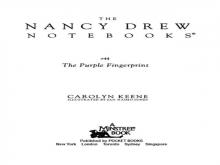 The Purple Fingerprint
The Purple Fingerprint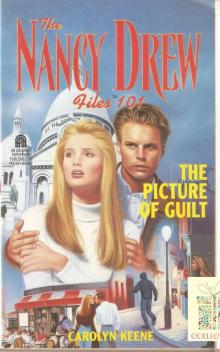 The Picture of Guilt
The Picture of Guilt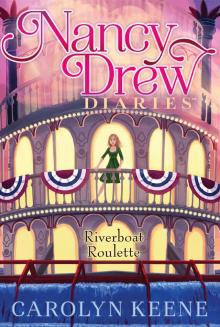 Riverboat Roulette
Riverboat Roulette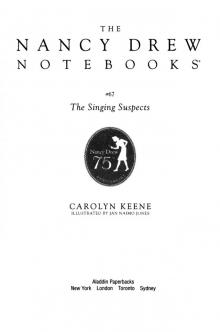 The Singing Suspects
The Singing Suspects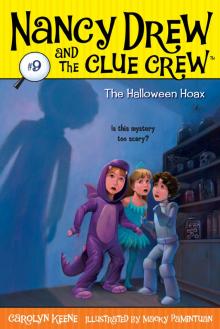 The Halloween Hoax
The Halloween Hoax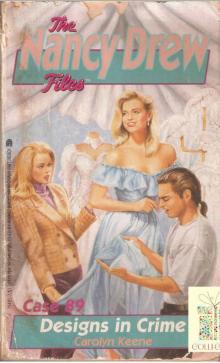 089 Designs in Crime
089 Designs in Crime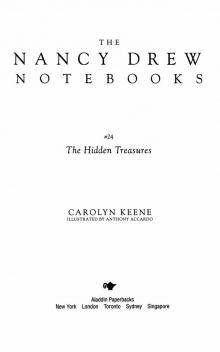 The Hidden Treasures
The Hidden Treasures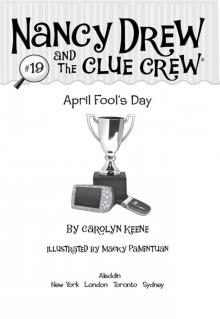 April Fool's Day
April Fool's Day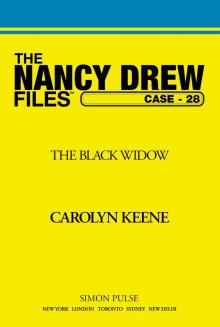 The Black Widow
The Black Widow Final Notes
Final Notes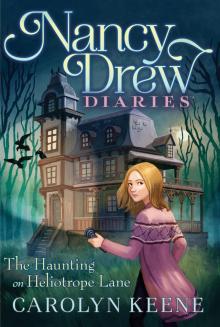 The Haunting on Heliotrope Lane
The Haunting on Heliotrope Lane The Runaway Bride
The Runaway Bride The Ghost of Grey Fox Inn
The Ghost of Grey Fox Inn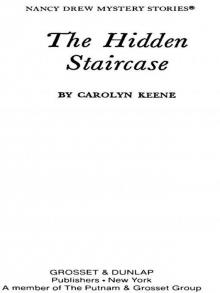 The Hidden Staircase
The Hidden Staircase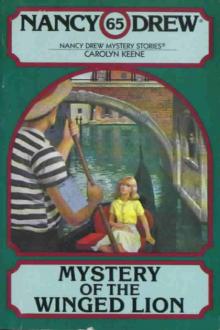 Mystery of the Winged Lion
Mystery of the Winged Lion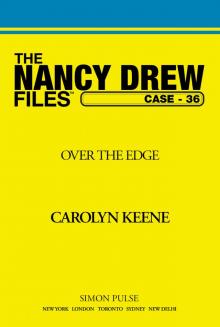 Over the Edge
Over the Edge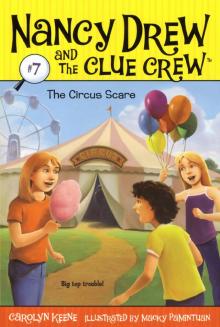 The Circus Scare
The Circus Scare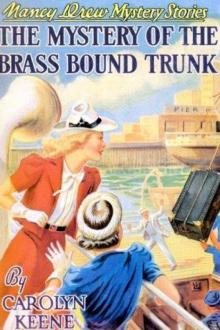 The Mystery of the Brass-Bound Trunk
The Mystery of the Brass-Bound Trunk Ski School Sneak
Ski School Sneak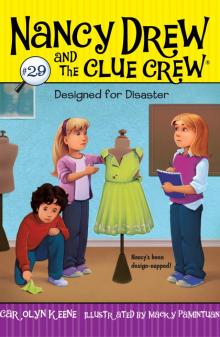 Designed for Disaster
Designed for Disaster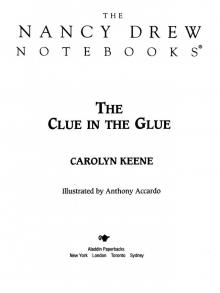 The Clue in the Glue
The Clue in the Glue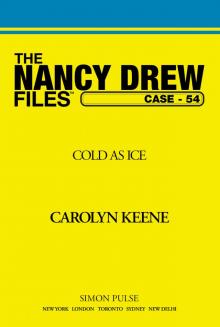 Cold as Ice
Cold as Ice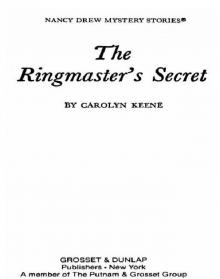 The Ringmaster's Secret
The Ringmaster's Secret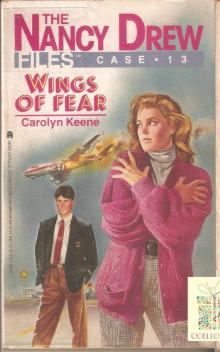 013 Wings of Fear
013 Wings of Fear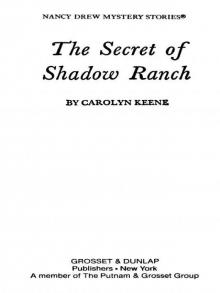 The Secret of Shadow Ranch
The Secret of Shadow Ranch Not Nice on Ice
Not Nice on Ice Earth Day Escapade
Earth Day Escapade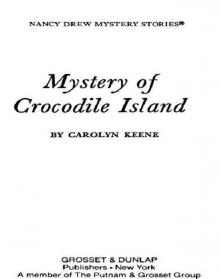 Mystery of Crocodile Island
Mystery of Crocodile Island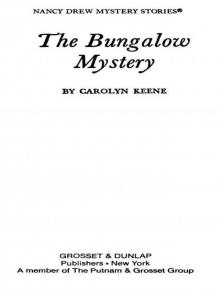 The Bungalow Mystery
The Bungalow Mystery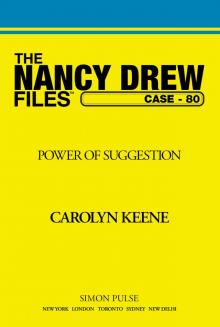 Power of Suggestion
Power of Suggestion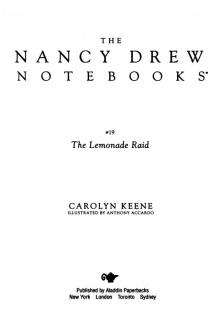 The Lemonade Raid
The Lemonade Raid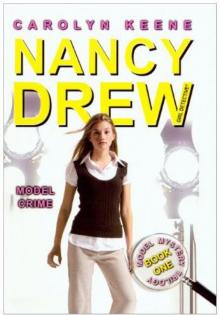 Model Crime
Model Crime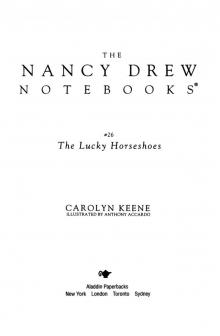 The Lucky Horseshoes
The Lucky Horseshoes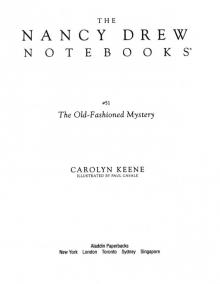 The Secret of the Old Clock
The Secret of the Old Clock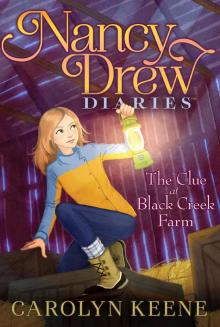 The Clue at Black Creek Farm
The Clue at Black Creek Farm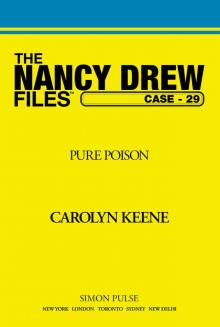 Pure Poison
Pure Poison Nobody's Business
Nobody's Business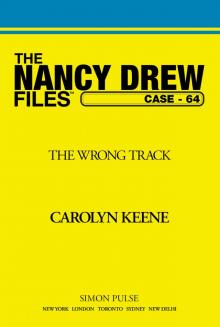 Wrong Track
Wrong Track Chick-Napped!
Chick-Napped!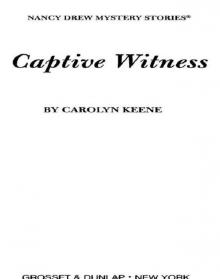 Captive Witness
Captive Witness If Looks Could Kill
If Looks Could Kill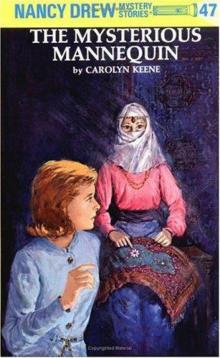 The Mysterious Mannequin
The Mysterious Mannequin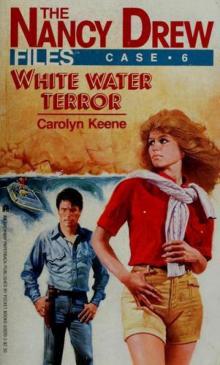 White Water Terror
White Water Terror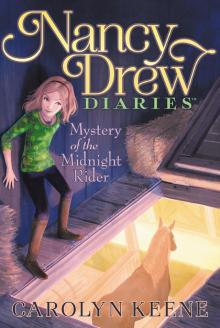 Mystery of the Midnight Rider
Mystery of the Midnight Rider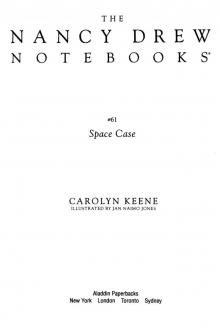 Space Case
Space Case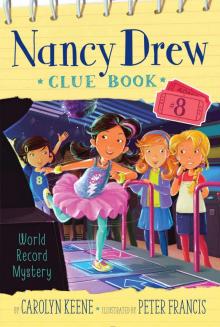 World Record Mystery
World Record Mystery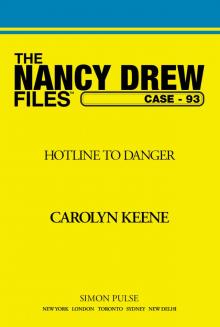 Hotline to Danger
Hotline to Danger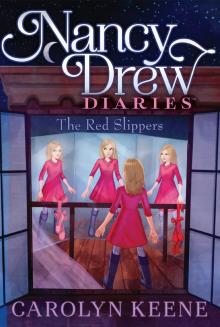 The Red Slippers
The Red Slippers A Crime for Christmas
A Crime for Christmas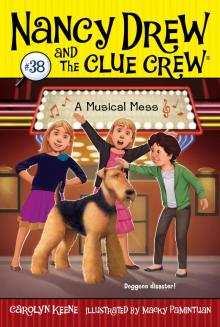 A Musical Mess
A Musical Mess The Dollhouse Mystery
The Dollhouse Mystery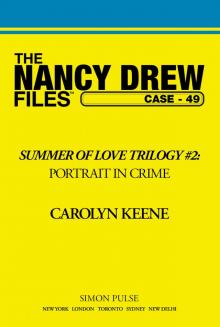 Portrait in Crime
Portrait in Crime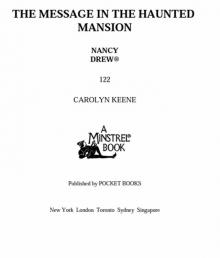 The Message in the Haunted Mansion
The Message in the Haunted Mansion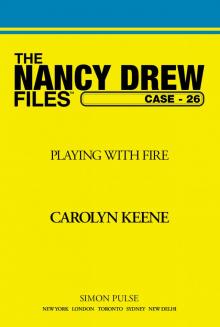 Playing With Fire
Playing With Fire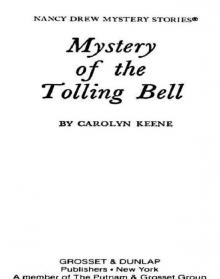 Mystery of the Tolling Bell
Mystery of the Tolling Bell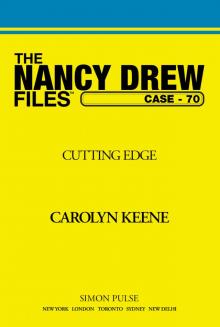 Cutting Edge
Cutting Edge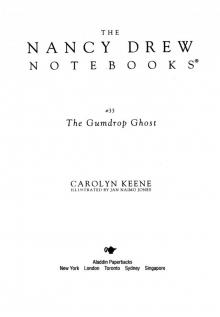 The Gumdrop Ghost
The Gumdrop Ghost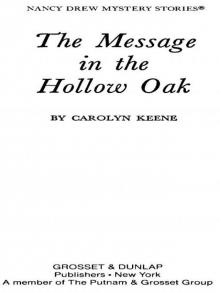 The Message in the Hollow Oak
The Message in the Hollow Oak Trial by Fire
Trial by Fire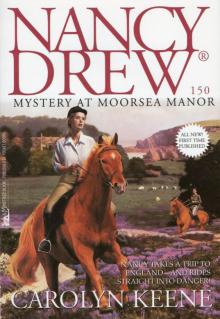 Mystery at Moorsea Manor
Mystery at Moorsea Manor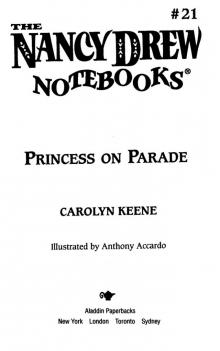 Princess on Parade
Princess on Parade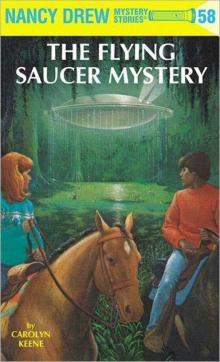 The Flying Saucer Mystery
The Flying Saucer Mystery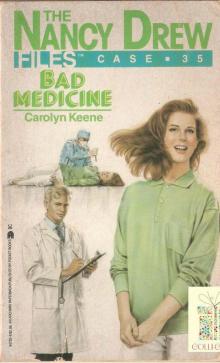 035 Bad Medicine
035 Bad Medicine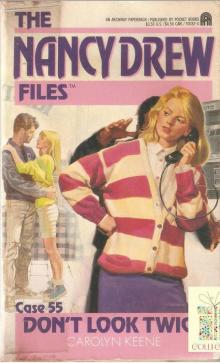 055 Don't Look Twice
055 Don't Look Twice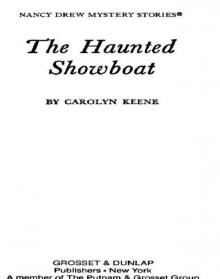 The Haunted Showboat
The Haunted Showboat Out of Bounds
Out of Bounds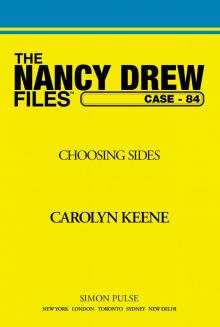 Choosing Sides
Choosing Sides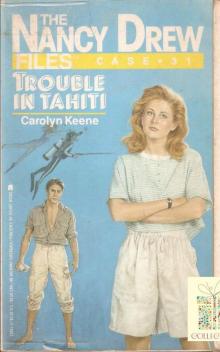 031 Trouble in Tahiti
031 Trouble in Tahiti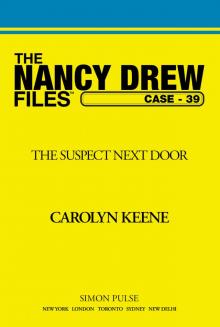 The Suspect Next Door
The Suspect Next Door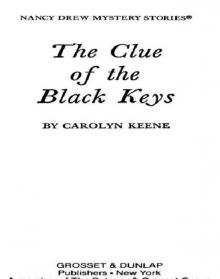 The Clue of the Black Keys
The Clue of the Black Keys The Secret Santa
The Secret Santa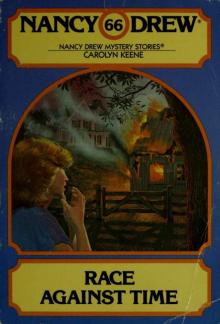 Race Against Time
Race Against Time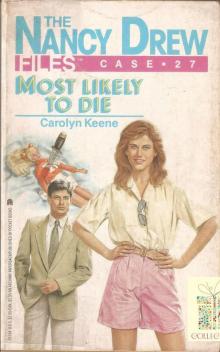 027 Most Likely to Die
027 Most Likely to Die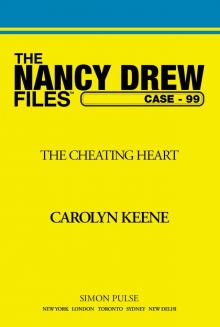 The Cheating Heart
The Cheating Heart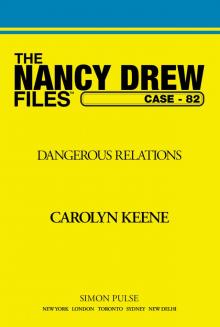 Dangerous Relations
Dangerous Relations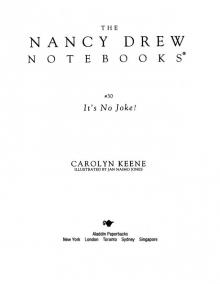 It's No Joke!
It's No Joke! The Mystery of the Mother Wolf
The Mystery of the Mother Wolf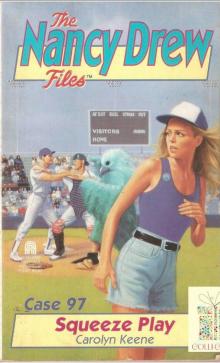 097 Squeeze Play
097 Squeeze Play Secret at Mystic Lake
Secret at Mystic Lake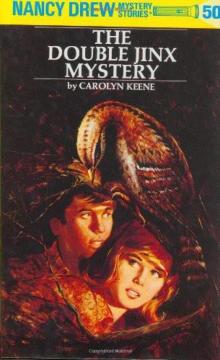 The Double Jinx Mystery
The Double Jinx Mystery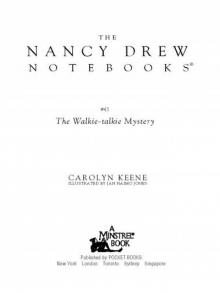 The Walkie Talkie Mystery
The Walkie Talkie Mystery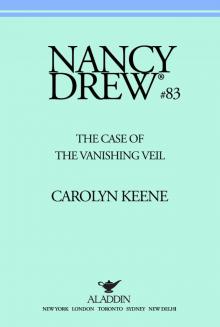 The Case of the Vanishing Veil
The Case of the Vanishing Veil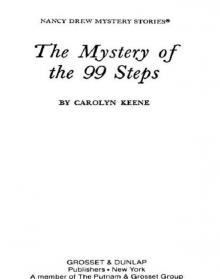 The Mystery of the 99 Steps
The Mystery of the 99 Steps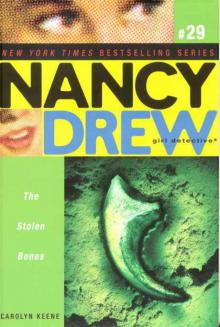 The Stolen Bones
The Stolen Bones The Clue of the Dancing Puppet
The Clue of the Dancing Puppet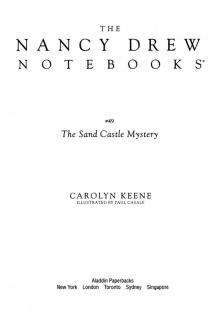 The Sand Castle Mystery
The Sand Castle Mystery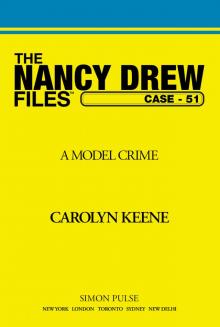 A Model Crime
A Model Crime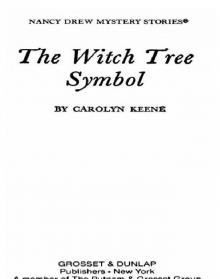 The Witch Tree Symbol
The Witch Tree Symbol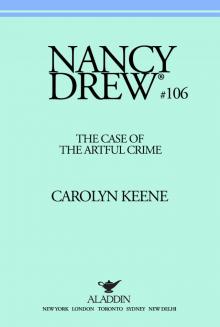 The Case of the Artful Crime
The Case of the Artful Crime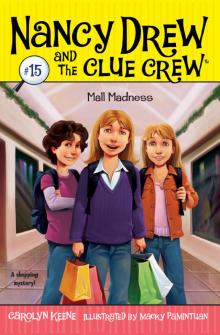 Mall Madness
Mall Madness Swiss Secrets
Swiss Secrets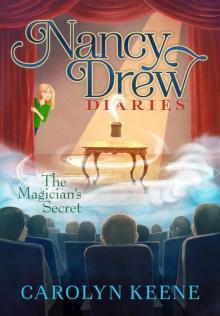 The Magician's Secret
The Magician's Secret Tall, Dark and Deadly
Tall, Dark and Deadly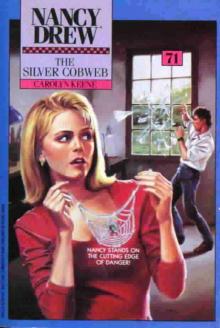 The Silver Cobweb
The Silver Cobweb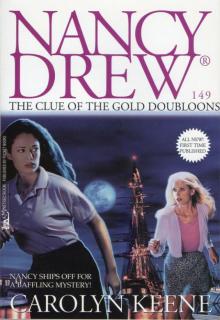 The Clue of the Gold Doubloons
The Clue of the Gold Doubloons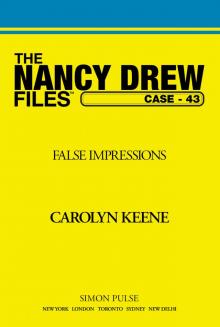 False Impressions
False Impressions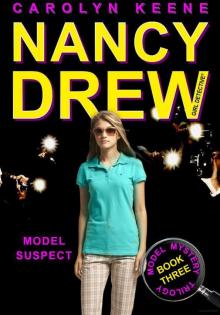 Model Suspect
Model Suspect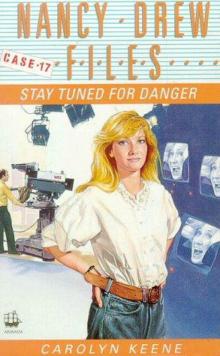 Stay Tuned for Danger
Stay Tuned for Danger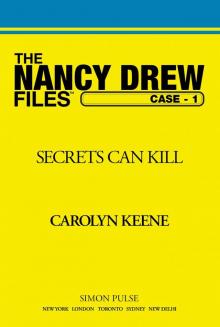 Secrets Can Kill
Secrets Can Kill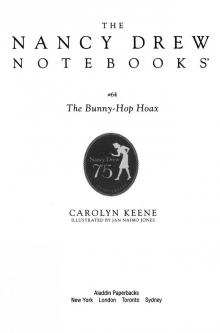 The Bunny-Hop Hoax
The Bunny-Hop Hoax The Cinderella Ballet Mystery
The Cinderella Ballet Mystery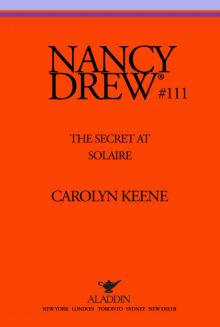 The Secret at Solaire
The Secret at Solaire Trash or Treasure?
Trash or Treasure? The Missing Horse Mystery
The Missing Horse Mystery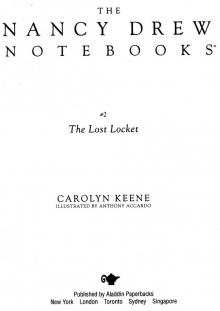 The Lost Locket
The Lost Locket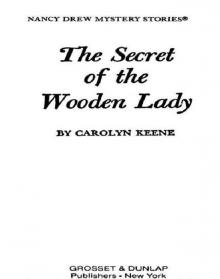 The Secret of the Wooden Lady
The Secret of the Wooden Lady Password to Larkspur Lane
Password to Larkspur Lane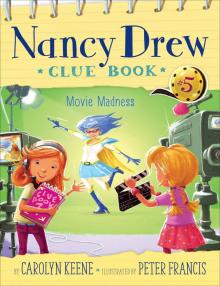 Movie Madness
Movie Madness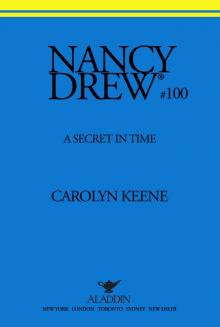 A Secret in Time
A Secret in Time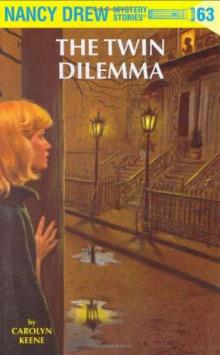 The Twin Dilemma
The Twin Dilemma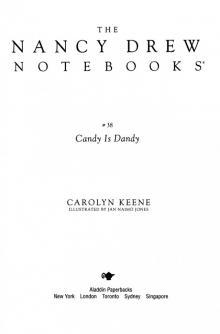 Candy Is Dandy
Candy Is Dandy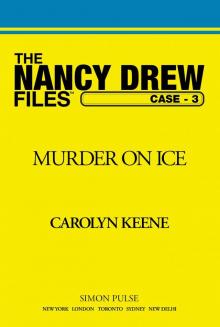 Murder on Ice
Murder on Ice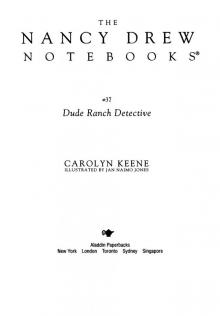 Dude Ranch Detective
Dude Ranch Detective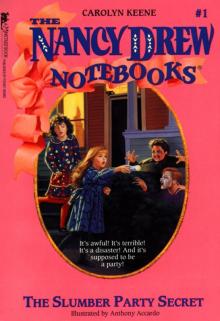 The Slumber Party Secret
The Slumber Party Secret The Clue in the Old Stagecoach
The Clue in the Old Stagecoach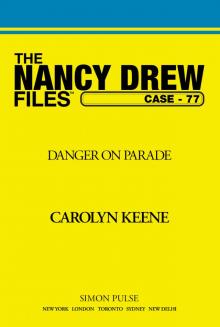 Danger on Parade
Danger on Parade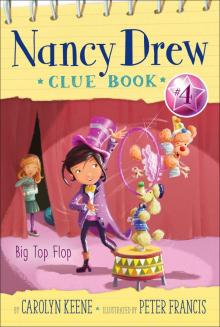 Big Top Flop
Big Top Flop Strangers on a Train
Strangers on a Train 087 Moving Target
087 Moving Target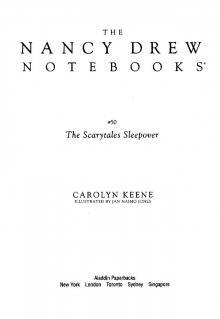 The Scarytales Sleepover
The Scarytales Sleepover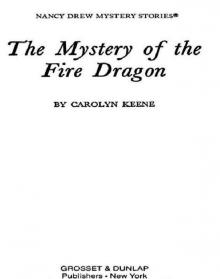 The Mystery of the Fire Dragon
The Mystery of the Fire Dragon The Carousel Mystery
The Carousel Mystery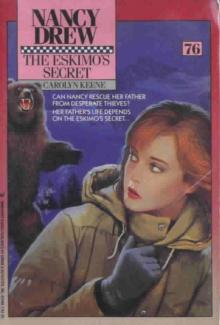 The Eskimo's Secret
The Eskimo's Secret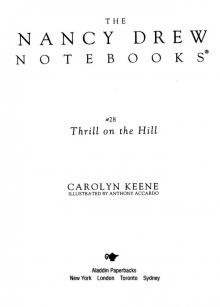 Thrill on the Hill
Thrill on the Hill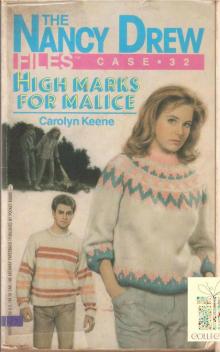 032 High Marks for Malice
032 High Marks for Malice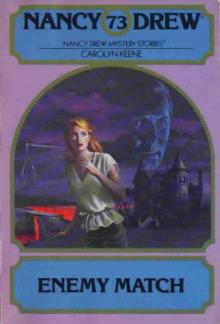 Enemy Match
Enemy Match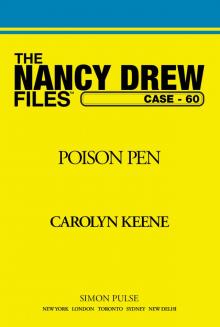 Poison Pen
Poison Pen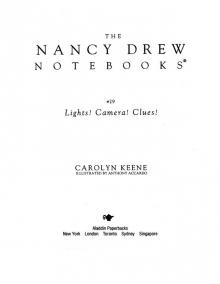 Lights, Camera . . . Cats!
Lights, Camera . . . Cats! Lost in the Everglades
Lost in the Everglades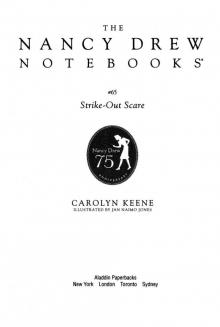 Strike-Out Scare
Strike-Out Scare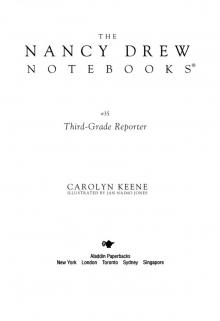 Third-Grade Reporter
Third-Grade Reporter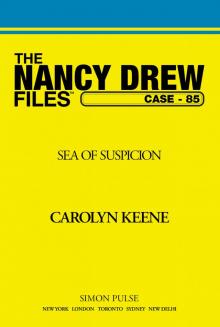 Sea of Suspicion
Sea of Suspicion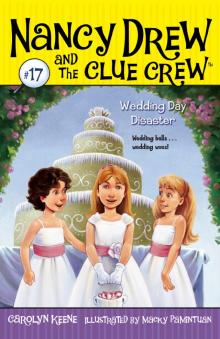 Wedding Day Disaster
Wedding Day Disaster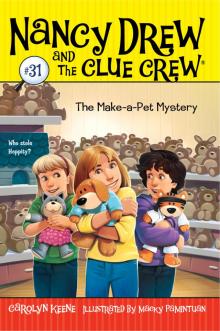 The Make-A-Pet Mystery
The Make-A-Pet Mystery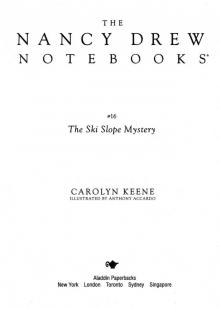 The Ski Slope Mystery
The Ski Slope Mystery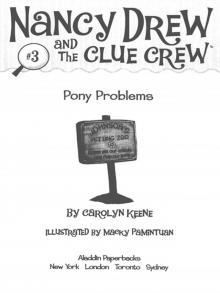 Pony Problems
Pony Problems Candy Kingdom Chaos
Candy Kingdom Chaos The Sign in the Smoke
The Sign in the Smoke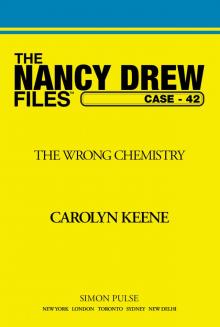 The Wrong Chemistry
The Wrong Chemistry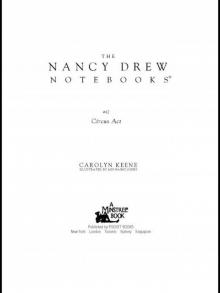 Circus Act
Circus Act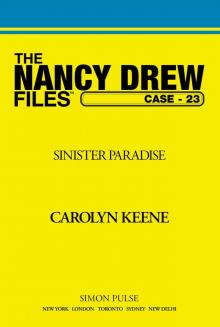 Sinister Paradise
Sinister Paradise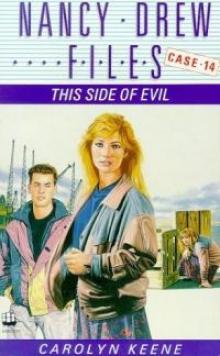 This Side of Evil
This Side of Evil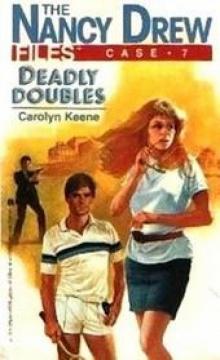 Deadly Doubles
Deadly Doubles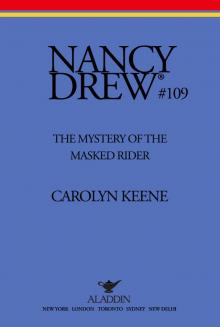 The Mystery of the Masked Rider
The Mystery of the Masked Rider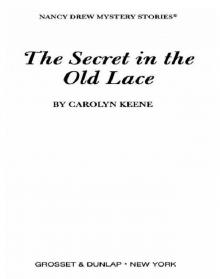 The Secret in the Old Lace
The Secret in the Old Lace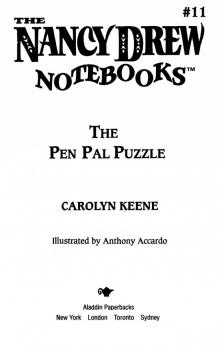 The Pen Pal Puzzle
The Pen Pal Puzzle Without a Trace
Without a Trace Whose Pet Is Best?
Whose Pet Is Best?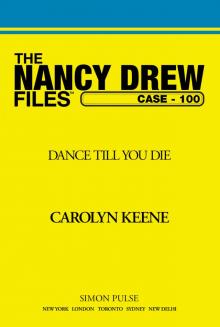 Dance Till You Die
Dance Till You Die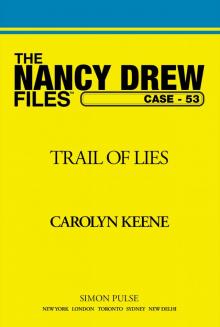 Trail of Lies
Trail of Lies Mystery of the Glowing Eye
Mystery of the Glowing Eye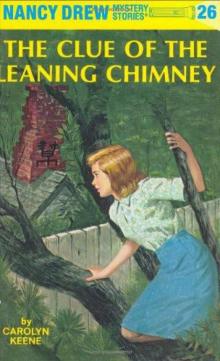 The Clue of the Leaning Chimney
The Clue of the Leaning Chimney The Crook Who Took the Book
The Crook Who Took the Book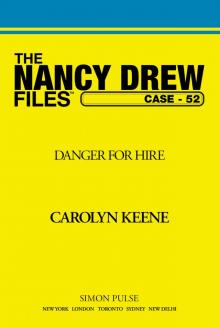 Danger for Hire
Danger for Hire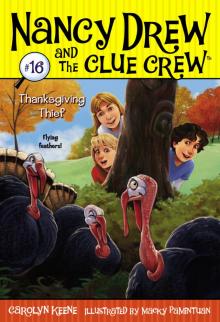 Thanksgiving Thief
Thanksgiving Thief Intruder!
Intruder!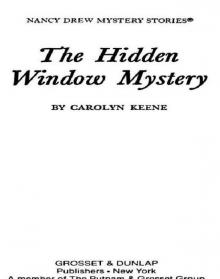 The Hidden Window Mystery
The Hidden Window Mystery Win, Place or Die
Win, Place or Die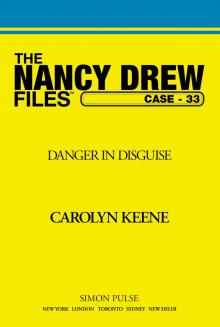 Danger in Disguise
Danger in Disguise The Best Detective
The Best Detective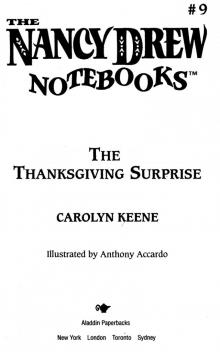 The Thanksgiving Surprise
The Thanksgiving Surprise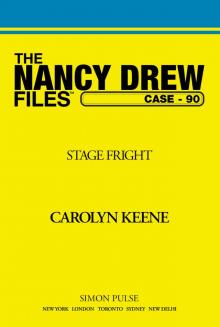 Stage Fright
Stage Fright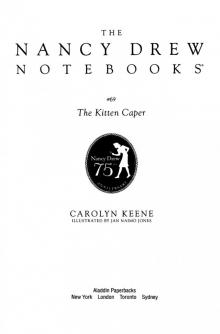 The Kitten Caper
The Kitten Caper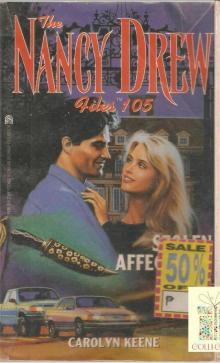 Stolen Affections
Stolen Affections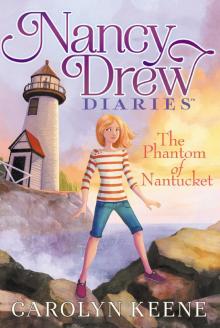 The Phantom of Nantucket
The Phantom of Nantucket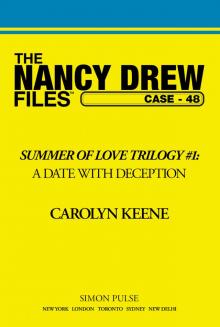 Date With Deception
Date With Deception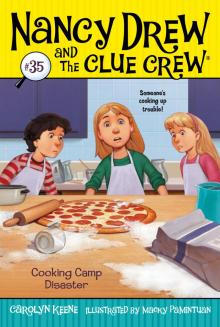 Cooking Camp Disaster
Cooking Camp Disaster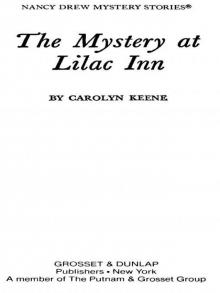 The Mystery at Lilac Inn
The Mystery at Lilac Inn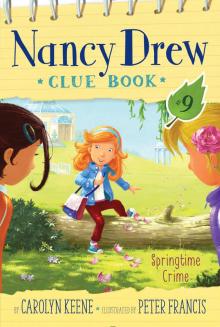 Springtime Crime
Springtime Crime Action!
Action!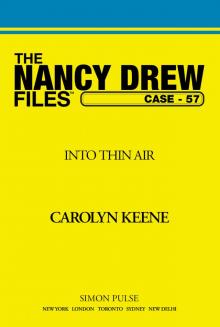 Into Thin Air
Into Thin Air The Chocolate-Covered Contest
The Chocolate-Covered Contest 025 Rich and Dangerous
025 Rich and Dangerous Bad Times, Big Crimes
Bad Times, Big Crimes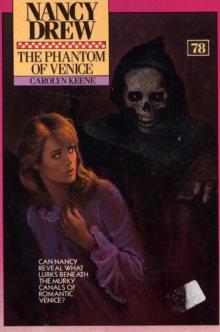 078 The Phantom Of Venice
078 The Phantom Of Venice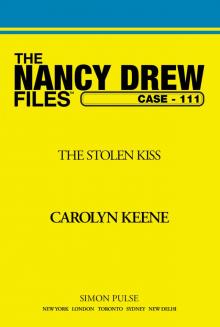 The Stolen Kiss
The Stolen Kiss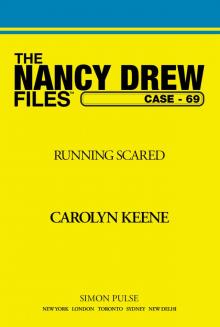 Running Scared
Running Scared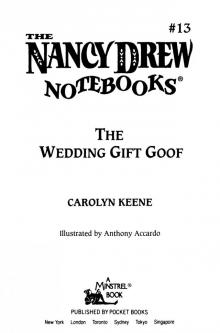 The Wedding Gift Goof
The Wedding Gift Goof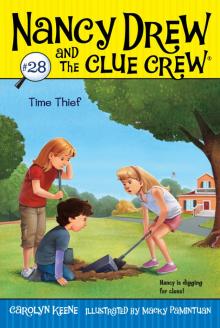 Time Thief
Time Thief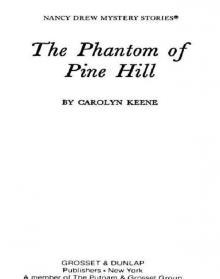 The Phantom of Pine Hill
The Phantom of Pine Hill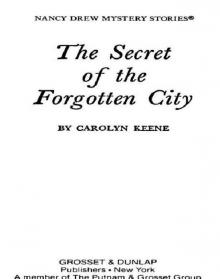 The Secret of the Forgotten City
The Secret of the Forgotten City The Emerald-Eyed Cat Mystery
The Emerald-Eyed Cat Mystery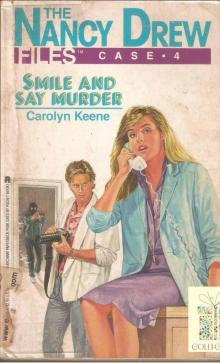 004 Smile and Say Murder
004 Smile and Say Murder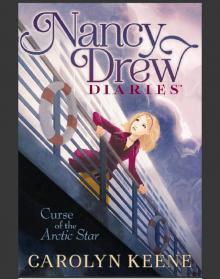 Curse of the Arctic Star
Curse of the Arctic Star Dinosaur Alert!
Dinosaur Alert!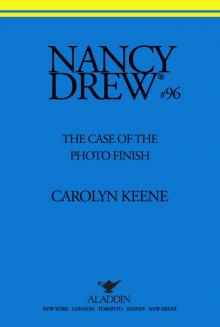 The Case of the Photo Finish
The Case of the Photo Finish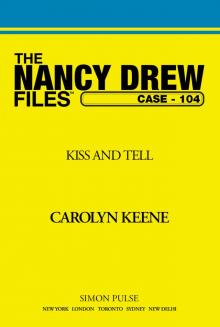 Kiss and Tell
Kiss and Tell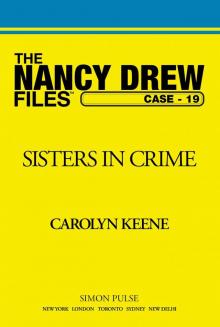 Sisters in Crime
Sisters in Crime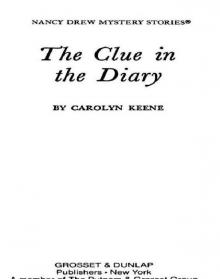 The Clue in the Diary
The Clue in the Diary 084 Choosing Sides
084 Choosing Sides Haunting of Horse Island
Haunting of Horse Island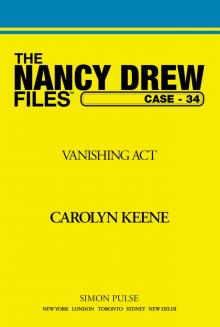 Vanishing Act
Vanishing Act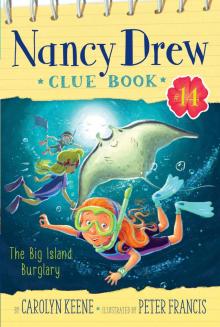 The Big Island Burglary
The Big Island Burglary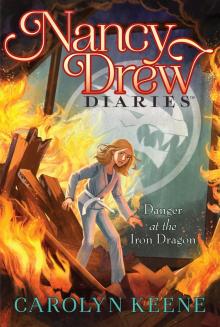 Danger at the Iron Dragon
Danger at the Iron Dragon Pets on Parade
Pets on Parade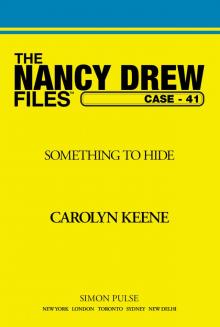 Something to Hide
Something to Hide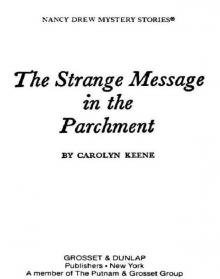 The Strange Message in the Parchment
The Strange Message in the Parchment On the Trail of Trouble
On the Trail of Trouble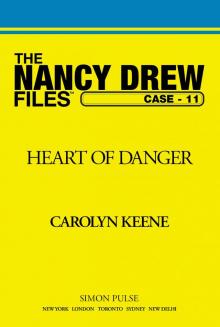 Heart of Danger
Heart of Danger The Snowman Surprise
The Snowman Surprise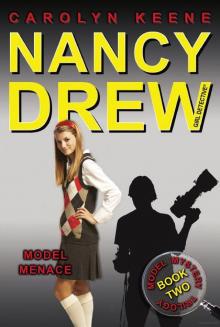 Model Menace
Model Menace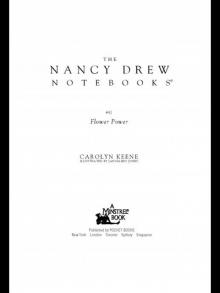 Flower Power
Flower Power The Great Goat Gaffe
The Great Goat Gaffe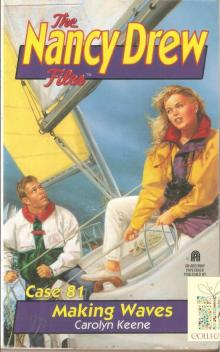 081 Making Waves
081 Making Waves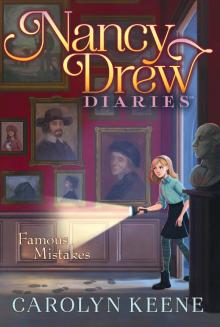 Famous Mistakes
Famous Mistakes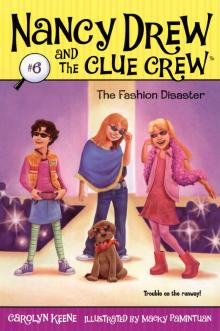 The Fashion Disaster
The Fashion Disaster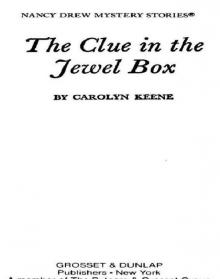 The Clue in the Jewel Box
The Clue in the Jewel Box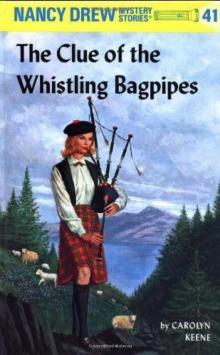 The Clue of the Whistling Bagpipes
The Clue of the Whistling Bagpipes Make No Mistake
Make No Mistake Greek Odyssey
Greek Odyssey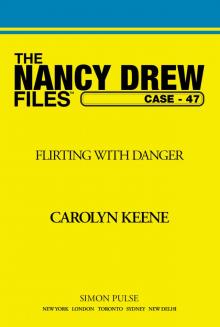 Flirting With Danger
Flirting With Danger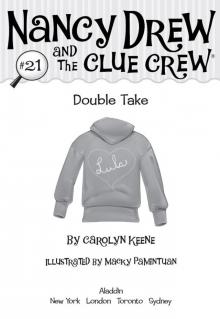 Double Take
Double Take Trouble Takes the Cake
Trouble Takes the Cake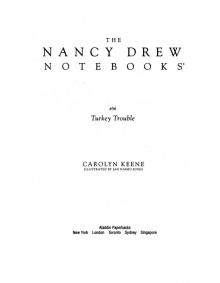 Turkey Trouble
Turkey Trouble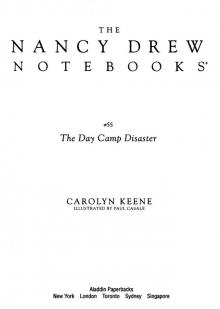 The Day Camp Disaster
The Day Camp Disaster The Secret in the Old Attic
The Secret in the Old Attic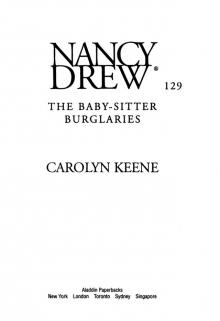 The Baby-Sitter Burglaries
The Baby-Sitter Burglaries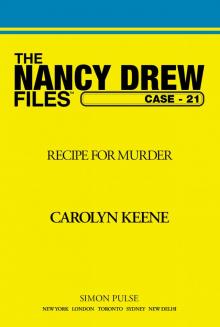 Recipe for Murder
Recipe for Murder The Secret of the Scarecrow
The Secret of the Scarecrow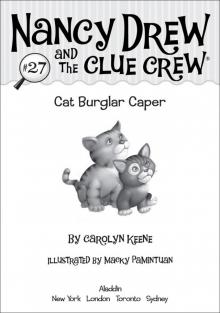 Cat Burglar Caper
Cat Burglar Caper Turkey Trot Plot
Turkey Trot Plot Scent of Danger
Scent of Danger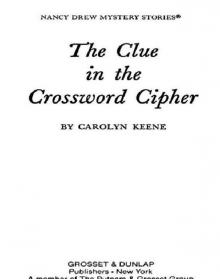 The Clue in the Crossword Cipher
The Clue in the Crossword Cipher 010 Buried Secrets
010 Buried Secrets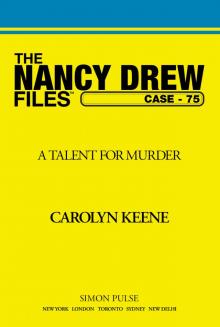 A Talent for Murder
A Talent for Murder The Triple Hoax
The Triple Hoax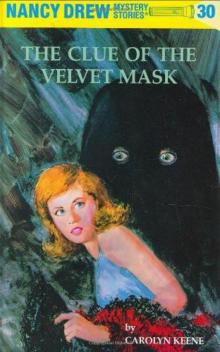 The Clue of the Velvet Mask
The Clue of the Velvet Mask Last Lemonade Standing
Last Lemonade Standing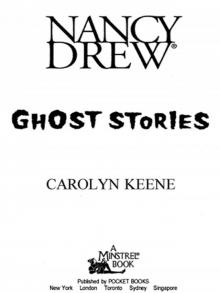 The Ghost of Blackwood Hall
The Ghost of Blackwood Hall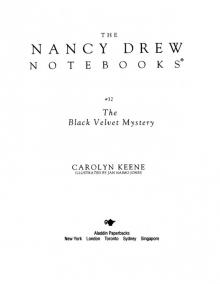 The Black Velvet Mystery
The Black Velvet Mystery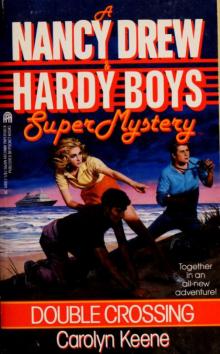 Double Crossing
Double Crossing Hidden Meanings
Hidden Meanings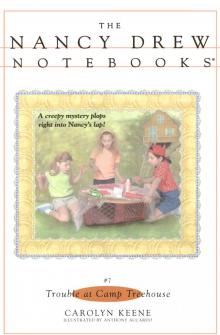 Trouble at Camp Treehouse
Trouble at Camp Treehouse An Instinct for Trouble
An Instinct for Trouble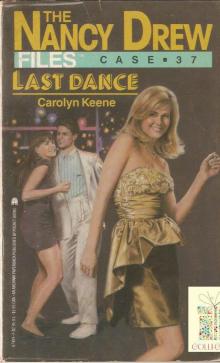 037 Last Dance
037 Last Dance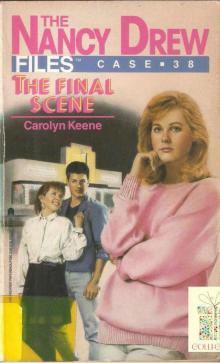 038 The Final Scene
038 The Final Scene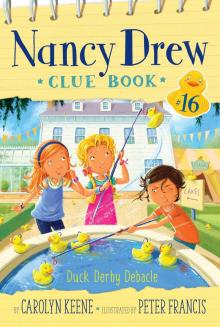 Duck Derby Debacle
Duck Derby Debacle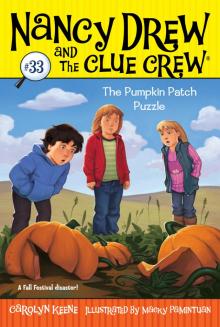 The Pumpkin Patch Puzzle
The Pumpkin Patch Puzzle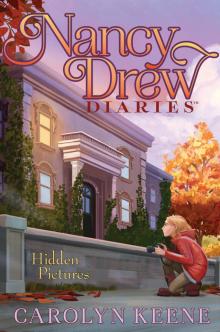 Hidden Pictures
Hidden Pictures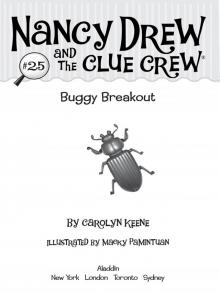 Buggy Breakout
Buggy Breakout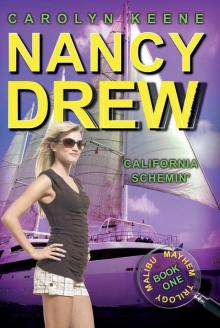 California Schemin'
California Schemin'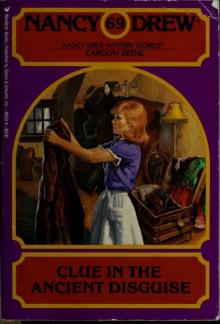 Clue in the Ancient Disguise
Clue in the Ancient Disguise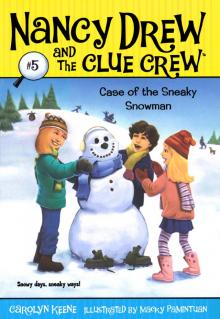 Case of the Sneaky Snowman
Case of the Sneaky Snowman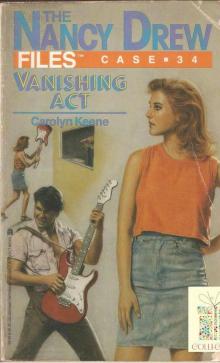 034 Vanishing Act
034 Vanishing Act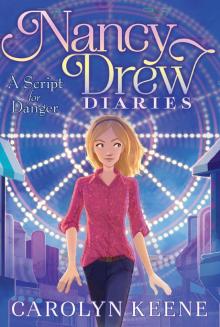 A Script for Danger
A Script for Danger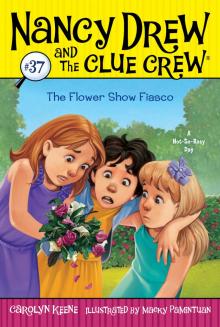 The Flower Show Fiasco
The Flower Show Fiasco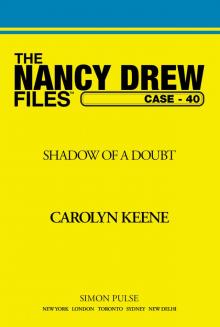 Shadow of a Doubt
Shadow of a Doubt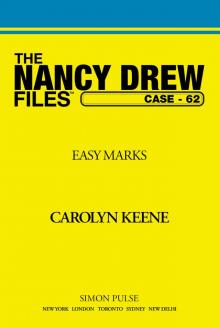 Easy Marks
Easy Marks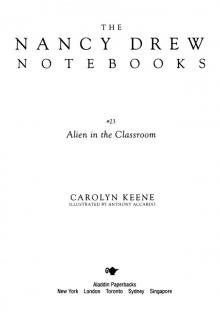 Alien in the Classroom
Alien in the Classroom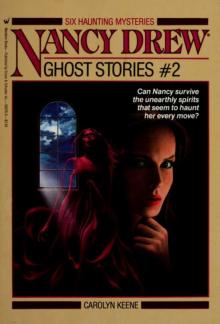 Ghost Stories, #2 (Nancy Drew)
Ghost Stories, #2 (Nancy Drew) The Bike Race Mystery
The Bike Race Mystery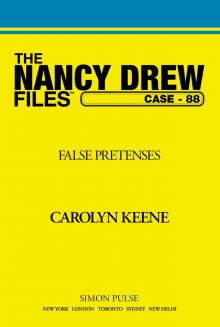 False Pretenses
False Pretenses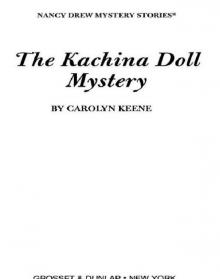 The Kachina Doll Mystery
The Kachina Doll Mystery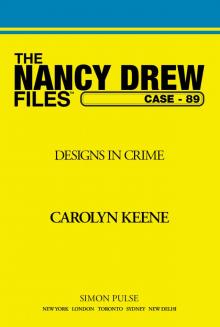 Designs in Crime
Designs in Crime False Notes
False Notes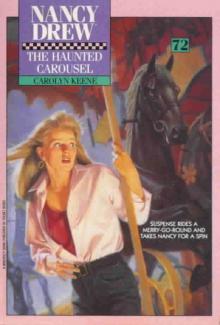 The Haunted Carousel
The Haunted Carousel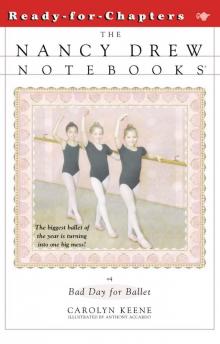 Bad Day for Ballet
Bad Day for Ballet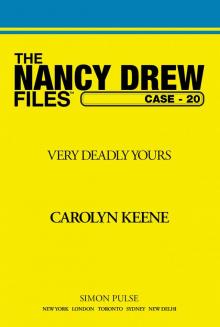 Very Deadly Yours
Very Deadly Yours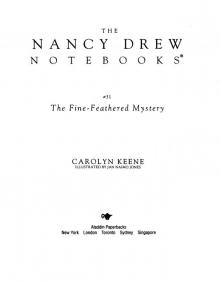 The Fine-Feathered Mystery
The Fine-Feathered Mystery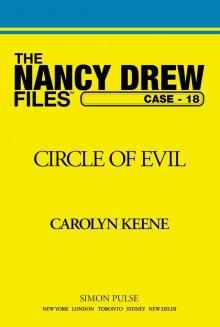 Circle of Evil
Circle of Evil The Crooked Banister
The Crooked Banister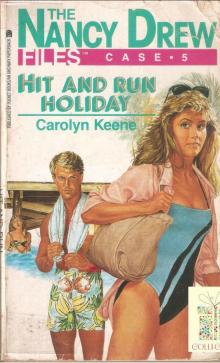 005 Hit and Run Holiday
005 Hit and Run Holiday The Spider Sapphire Mystery
The Spider Sapphire Mystery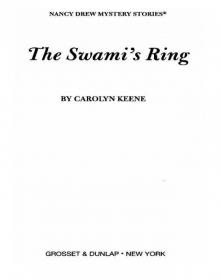 The Swami's Ring
The Swami's Ring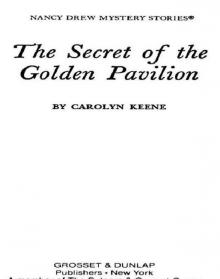 The Secret of the Golden Pavilion
The Secret of the Golden Pavilion Recipe for Trouble
Recipe for Trouble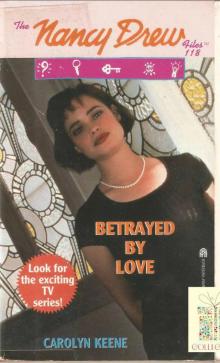 Betrayed by Love
Betrayed by Love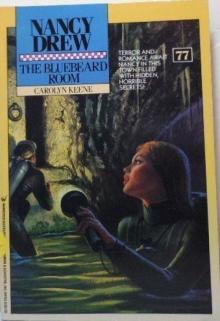 The Bluebeard Room
The Bluebeard Room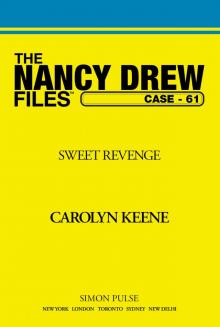 Sweet Revenge
Sweet Revenge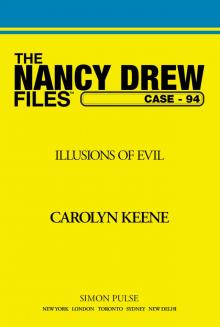 Illusions of Evil
Illusions of Evil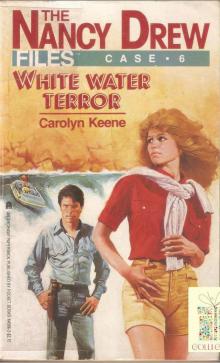 006 White Water Terror
006 White Water Terror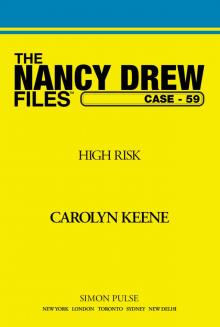 High Risk
High Risk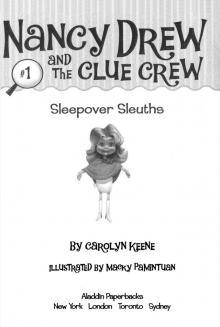 Sleepover Sleuths
Sleepover Sleuths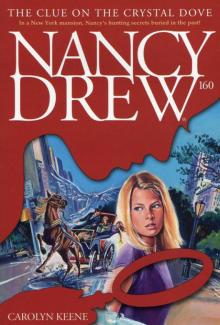 The Clue on the Crystal Dove
The Clue on the Crystal Dove The Stolen Unicorn
The Stolen Unicorn The Professor and the Puzzle
The Professor and the Puzzle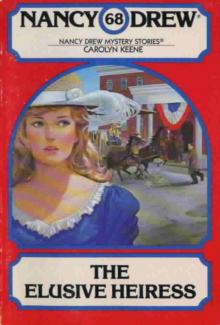 The Elusive Heiress
The Elusive Heiress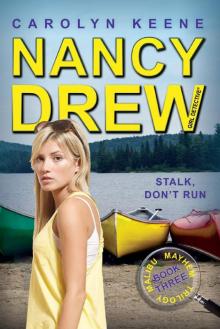 Stalk, Don't Run
Stalk, Don't Run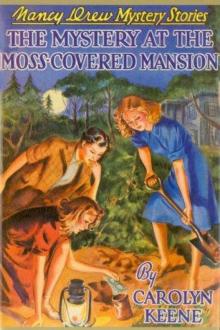 The Mystery at the Moss-Covered Mansion
The Mystery at the Moss-Covered Mansion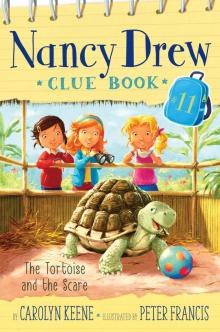 The Tortoise and the Scare
The Tortoise and the Scare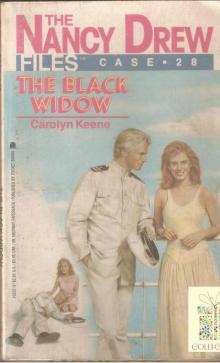 028 The Black Widow
028 The Black Widow Big Worry in Wonderland
Big Worry in Wonderland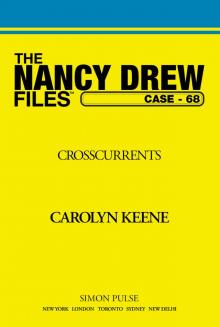 Crosscurrents
Crosscurrents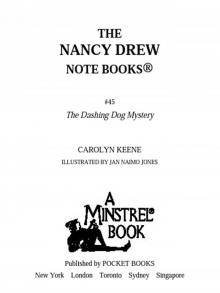 The Dashing Dog Mystery
The Dashing Dog Mystery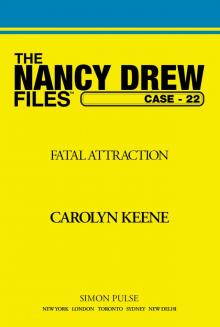 Fatal Attraction
Fatal Attraction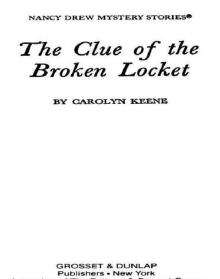 The Clue of the Broken Locket
The Clue of the Broken Locket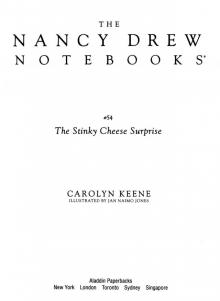 The Stinky Cheese Surprise
The Stinky Cheese Surprise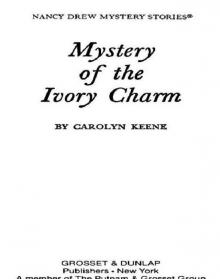 Mystery of the Ivory Charm
Mystery of the Ivory Charm A Race Against Time
A Race Against Time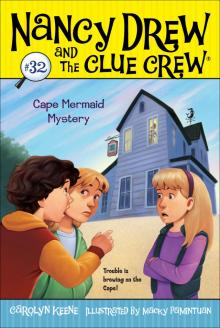 Cape Mermaid Mystery
Cape Mermaid Mystery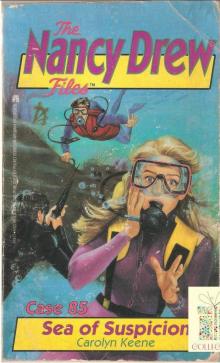 085 Sea of Suspicion
085 Sea of Suspicion 058 Hot Pursuit
058 Hot Pursuit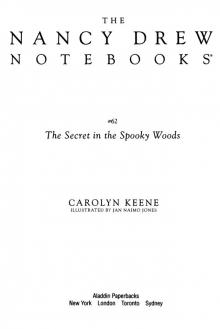 The Secret in the Spooky Woods
The Secret in the Spooky Woods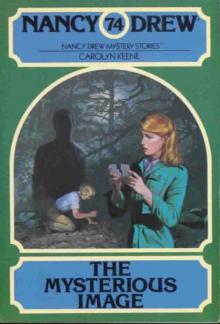 The Mysterious Image
The Mysterious Image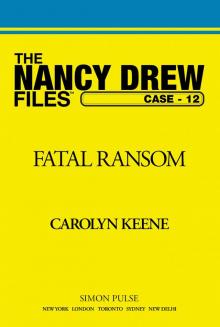 Fatal Ransom
Fatal Ransom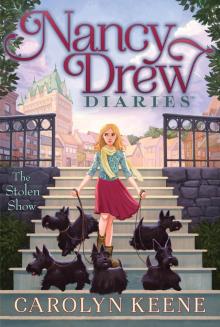 The Stolen Show
The Stolen Show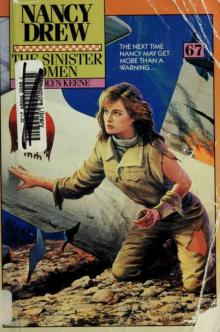 The Sinister Omen
The Sinister Omen The Secret of Mirror Bay
The Secret of Mirror Bay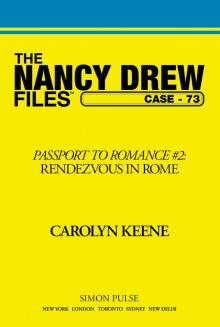 Rendezvous in Rome
Rendezvous in Rome The Perfect Plot
The Perfect Plot The Mystery of Misty Canyon
The Mystery of Misty Canyon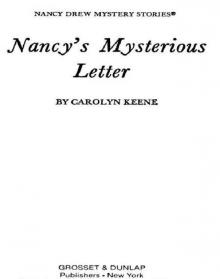 Nancy's Mysterious Letter
Nancy's Mysterious Letter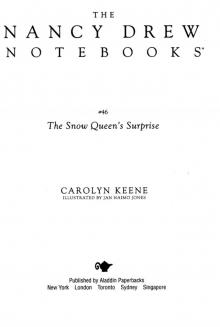 The Snow Queen's Surprise
The Snow Queen's Surprise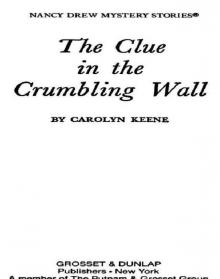 The Clue in the Crumbling Wall
The Clue in the Crumbling Wall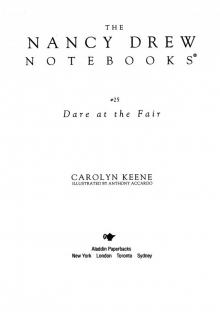 Dare at the Fair
Dare at the Fair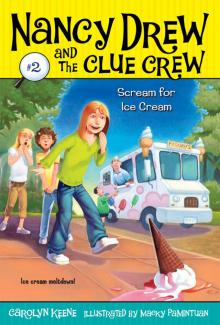 Scream for Ice Cream
Scream for Ice Cream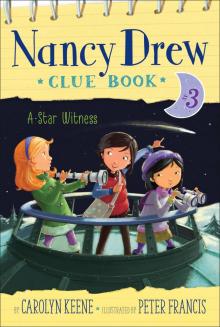 A Star Witness
A Star Witness 002 Deadly Intent
002 Deadly Intent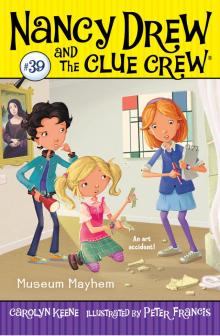 Museum Mayhem
Museum Mayhem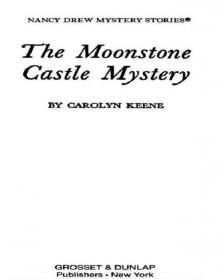 The Moonstone Castle Mystery
The Moonstone Castle Mystery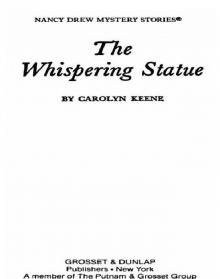 The Whispering Statue
The Whispering Statue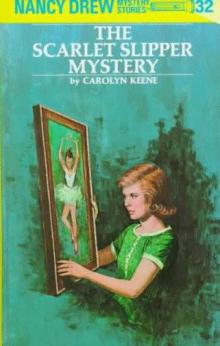 The Scarlet Slipper Mystery
The Scarlet Slipper Mystery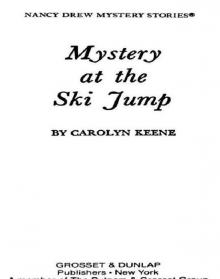 Mystery at the Ski Jump
Mystery at the Ski Jump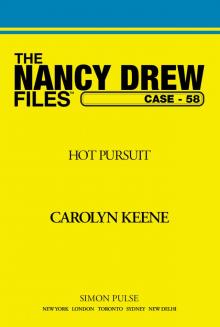 Hot Pursuit
Hot Pursuit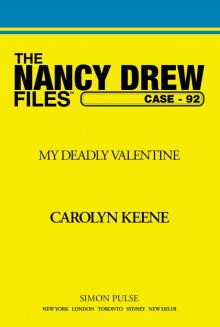 My Deadly Valentine
My Deadly Valentine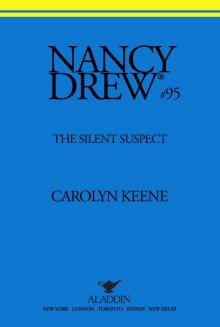 The Silent Suspect
The Silent Suspect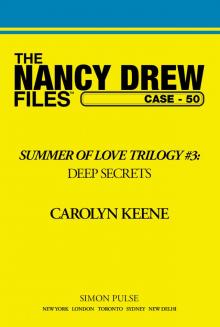 Deep Secrets
Deep Secrets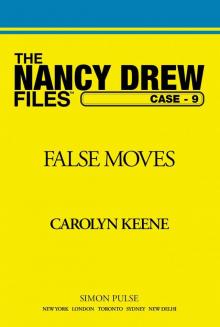 False Moves
False Moves The Zoo Crew
The Zoo Crew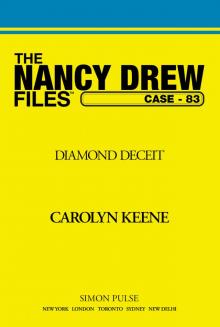 Diamond Deceit
Diamond Deceit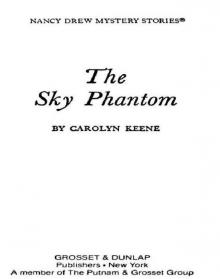 The Sky Phantom
The Sky Phantom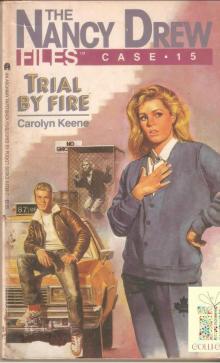 015 Trial by Fire
015 Trial by Fire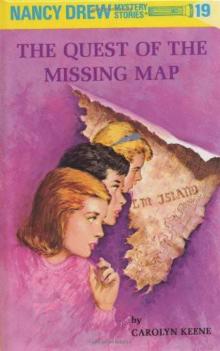 The Quest of the Missing Map
The Quest of the Missing Map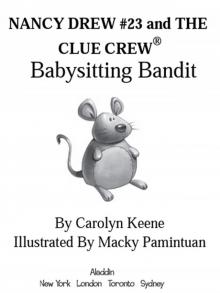 Babysitting Bandit
Babysitting Bandit Don't Look Twice
Don't Look Twice Never Say Die
Never Say Die The Soccer Shoe Clue
The Soccer Shoe Clue Pool Party Puzzler
Pool Party Puzzler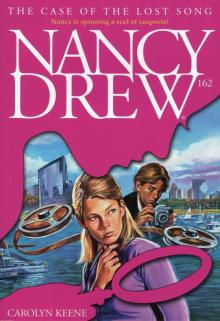 The Case of the Lost Song
The Case of the Lost Song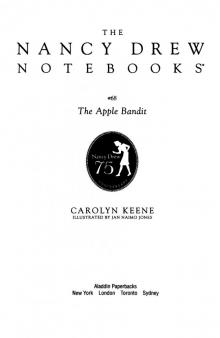 The Apple Bandit
The Apple Bandit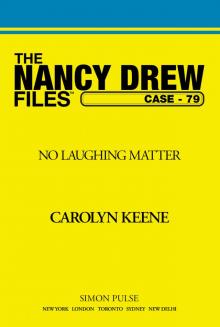 No Laughing Matter
No Laughing Matter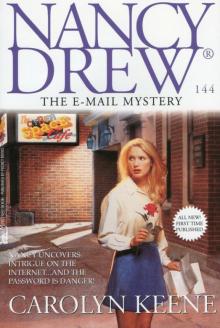 The Thirteenth Pearl
The Thirteenth Pearl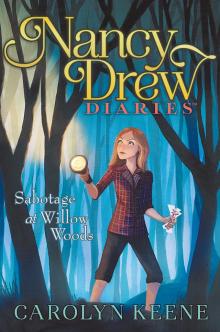 Sabotage at Willow Woods
Sabotage at Willow Woods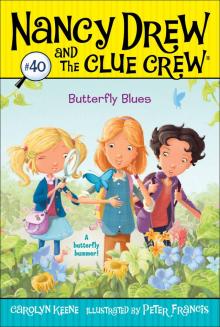 Butterfly Blues
Butterfly Blues Model Crime 1
Model Crime 1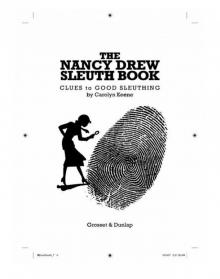 The Nancy Drew Sleuth Book
The Nancy Drew Sleuth Book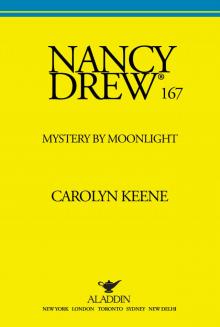 Mystery by Moonlight
Mystery by Moonlight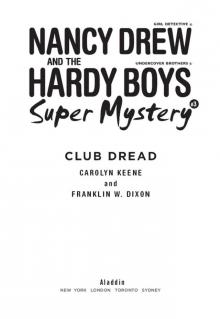 Club Dread
Club Dread The Clue in the Camera
The Clue in the Camera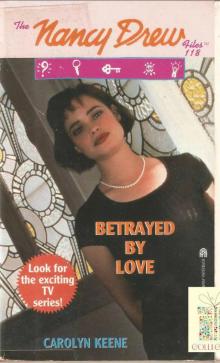 118 Betrayed By Love
118 Betrayed By Love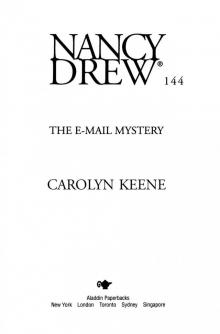 The E-Mail Mystery (Nancy Drew Book 144)
The E-Mail Mystery (Nancy Drew Book 144) Stay Tuned for Danger: Circle of Evil
Stay Tuned for Danger: Circle of Evil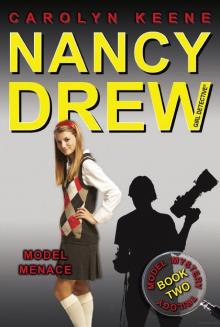 Model Menace 2
Model Menace 2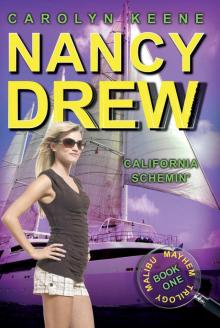 California Schemin': Book One in the Malibu Mayhem Trilogy
California Schemin': Book One in the Malibu Mayhem Trilogy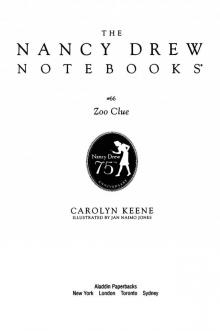 Zoo Clue (Nancy Drew Notebooks)
Zoo Clue (Nancy Drew Notebooks)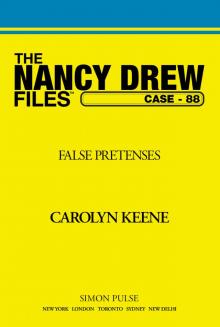 False Pretences
False Pretences 151 The Chocolate-Covered Contest
151 The Chocolate-Covered Contest Close Encounters
Close Encounters The Emeral-Eyed Cat Mystery
The Emeral-Eyed Cat Mystery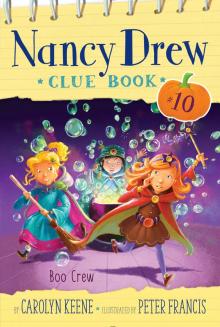 Boo Crew
Boo Crew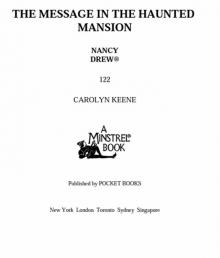 The Message in the Haunted Mansion (Nancy Drew Book 122)
The Message in the Haunted Mansion (Nancy Drew Book 122) A Nancy Drew Christmas
A Nancy Drew Christmas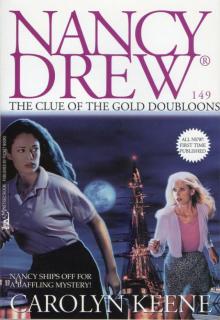 149 The Clue Of The Gold Doubloons
149 The Clue Of The Gold Doubloons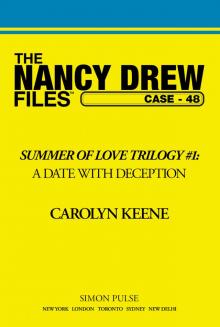 A Date with Deception
A Date with Deception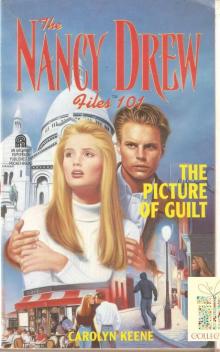 101 The Picture of Guilt
101 The Picture of Guilt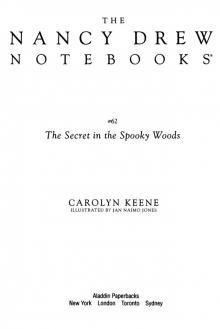 The Secret in the Spooky Woods (Nancy Drew Notebooks Book 62)
The Secret in the Spooky Woods (Nancy Drew Notebooks Book 62)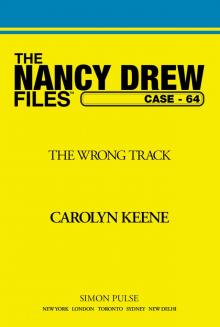 The Wrong Track
The Wrong Track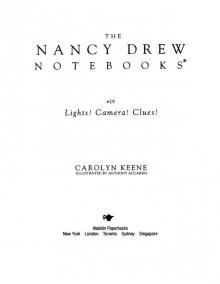 Lights! Camera! Clues!
Lights! Camera! Clues!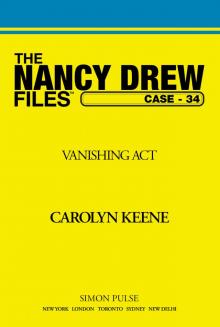 The Vanishing Act
The Vanishing Act Lights, Camera . . .
Lights, Camera . . . Model Suspect 3
Model Suspect 3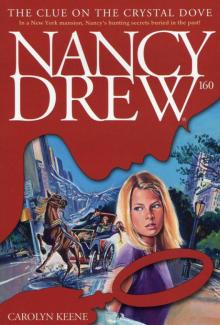 160 The Clue On The Crystal Dove
160 The Clue On The Crystal Dove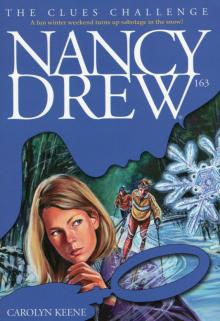 163 The Clues Challenge
163 The Clues Challenge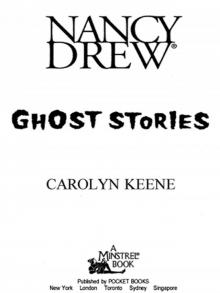 Ghost Stories (Nancy Drew)
Ghost Stories (Nancy Drew)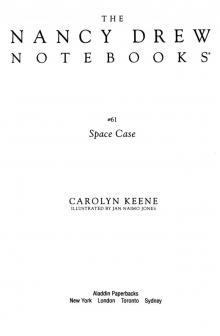 Space Case (Nancy Drew Notebooks Book 61)
Space Case (Nancy Drew Notebooks Book 61)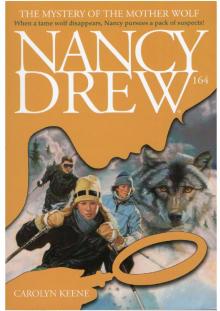 164 The Mystery Of The Mother Wolf
164 The Mystery Of The Mother Wolf 148 On The Trail Of Trouble
148 On The Trail Of Trouble The Walkie-Talkie Mystery
The Walkie-Talkie Mystery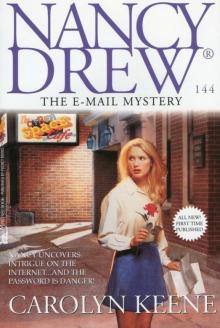 The E-Mail Mystery
The E-Mail Mystery Intruder (Nancy Drew (All New) Girl Detective)
Intruder (Nancy Drew (All New) Girl Detective)![The Stolen Relic [Nancy Drew Girl Detective 007] Read online](http://i1.bookreadfree.com/i2/04/11/the_stolen_relic_nancy_drew_girl_detective_007_preview.jpg) The Stolen Relic [Nancy Drew Girl Detective 007]
The Stolen Relic [Nancy Drew Girl Detective 007] 105 Stolen Affections
105 Stolen Affections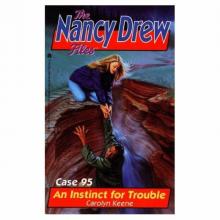 An Instict for Trouble
An Instict for Trouble 161 Lost In The Everglades
161 Lost In The Everglades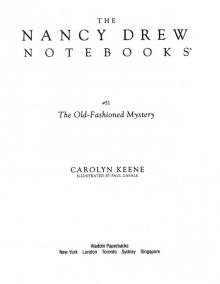 The Old-Fashioned Mystery
The Old-Fashioned Mystery Perfect Plot
Perfect Plot